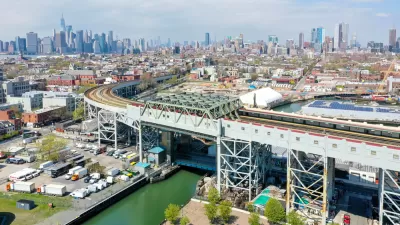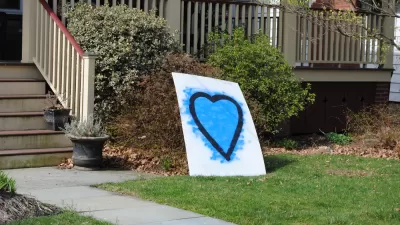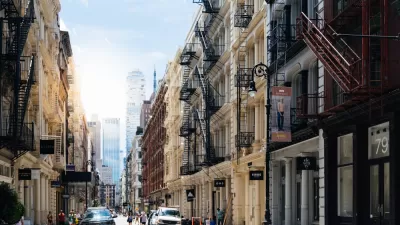As cities across America seek to replicate New York's celebrated new park, Charles A. Birnbaum distills the secrets behind the High Line's success.
What is the secret to the High Line's success? Determined leadership? Public/private partnerships? According to Birnbaum, "What really happened there is, first and foremost, a triumph of historic preservation and design. And, it's a big win for design ingenuity over the more commonplace tabula rasa approach that results in bulldozed sites and the eradication of cultural narratives."
The park and surrounding area's success proves that development and preservation are not diametrically opposed. Citing examples from San Francisco, Pittsburgh, Tampa, and other locales, Birnbaum argues that, "a site-specific, adaptive reuse approach is a viable holistic alternative that embraces both change and continuity."
"Despites these successes, municipal officials and developers still blandly repackage the either/or scenario -- preserve or build anew -- to the detriment of extant, unique, regional expressions of landscape architecture and architecture that could otherwise be creatively reused (a more sustainable solution). Can't we measure success by recognizing that an authentic historic site -- which communicates a powerful sense of place -- can and should be sympathetically transformed? When did historic preservation values become such a negative?," implores Birnbaum.
Meanwhile, on our Interchange blog, Sam Hall Kaplan
http://www.planetizen.com/node/57265" target="_blank">opines on why redevelopment a la the High Line may not be so desirable after all.
FULL STORY: The Real High Line Effect -- A Transformational Triumph of Preservation and Design

Planetizen Federal Action Tracker
A weekly monitor of how Trump’s orders and actions are impacting planners and planning in America.

Restaurant Patios Were a Pandemic Win — Why Were They so Hard to Keep?
Social distancing requirements and changes in travel patterns prompted cities to pilot new uses for street and sidewalk space. Then it got complicated.

Maui's Vacation Rental Debate Turns Ugly
Verbal attacks, misinformation campaigns and fistfights plague a high-stakes debate to convert thousands of vacation rentals into long-term housing.

In California Battle of Housing vs. Environment, Housing Just Won
A new state law significantly limits the power of CEQA, an environmental review law that served as a powerful tool for blocking new development.

Boulder Eliminates Parking Minimums Citywide
Officials estimate the cost of building a single underground parking space at up to $100,000.

Orange County, Florida Adopts Largest US “Sprawl Repair” Code
The ‘Orange Code’ seeks to rectify decades of sprawl-inducing, car-oriented development.
Urban Design for Planners 1: Software Tools
This six-course series explores essential urban design concepts using open source software and equips planners with the tools they need to participate fully in the urban design process.
Planning for Universal Design
Learn the tools for implementing Universal Design in planning regulations.
Heyer Gruel & Associates PA
JM Goldson LLC
Custer County Colorado
City of Camden Redevelopment Agency
City of Astoria
Transportation Research & Education Center (TREC) at Portland State University
Camden Redevelopment Agency
City of Claremont
Municipality of Princeton (NJ)





























